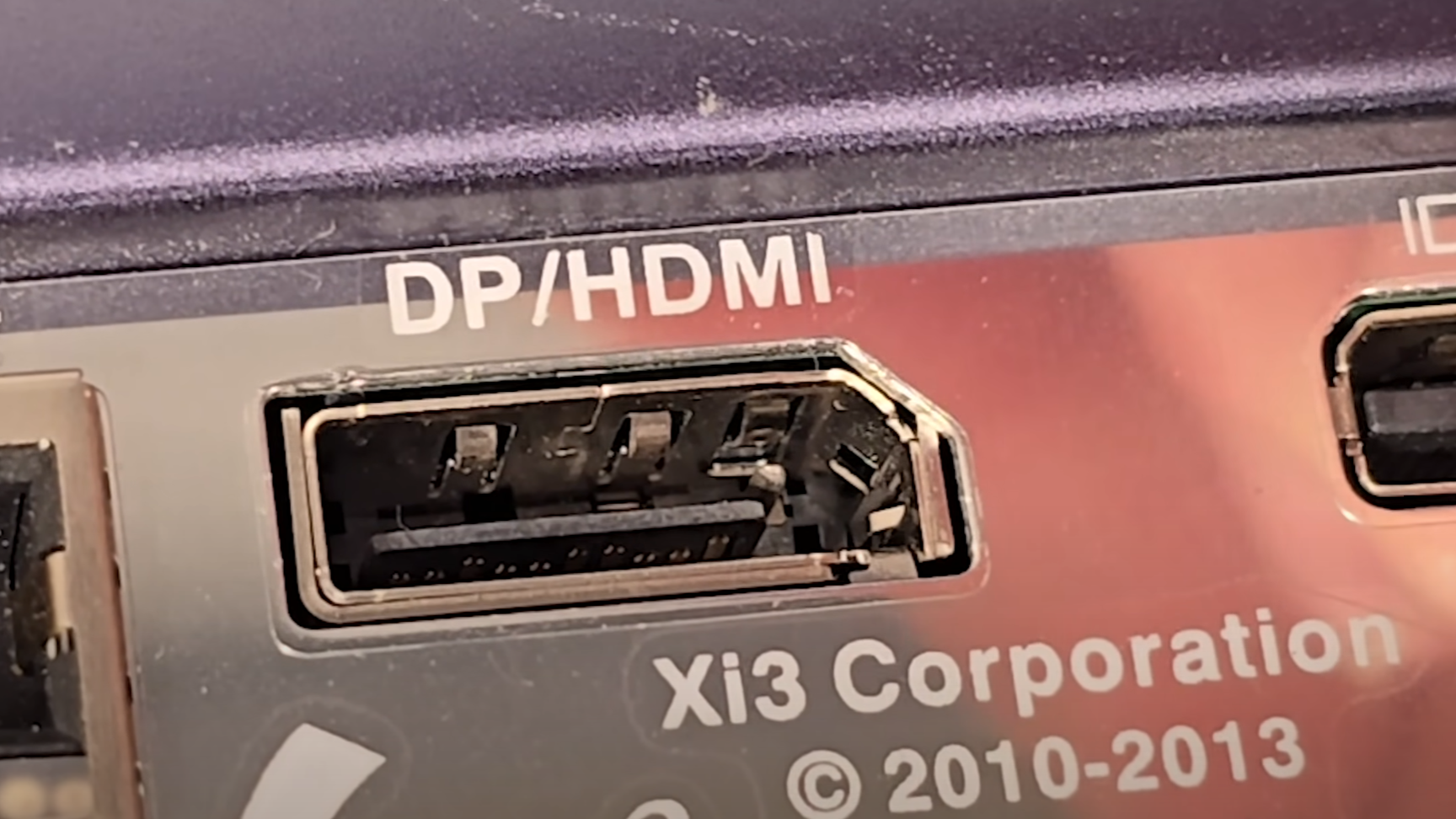Earlier this week, we covered the decade-old Xi3 PistonMini PC being tested by a YouTuber, Bringus Studios. Today, we’ll also highlight one of the Piston’s most unique, slept-on features: a DisplayPort that can also take HDMI. This information is also sourced from Bringus Studios, though the close-up on the video ports is from a short side-channel video, not the main channel. We’ve embedded this video below.
In addition to Bringus Studios' coverage, we’ll also refer to thePC Watch writeupon the unique DP/HDMI hybrid port, which discusses in a little more detail how this is executed. For now, let’s review the original source material, which highlights the true video output versatility of the Xi3 Piston.

So, following Bringus Studios' main Xi3 Piston coverage, a former Xi3 employee reached out on their Discord to clarify the purpose of the combo DP and HDMI port since everyone was under the impression it was a DP port with support for an HDMI signal, not full pin-compatibility.
While Bringus tests the device’s video output switching capabilities by changing a BIOS setting and picking HDMI or DisplayPort, he’s convinced that the default BIOS option will auto-detect which one happens to be plugged in.

So, what’s the takeaway? Obviously, this remarkable, innovative feature doesn’t suddenly redeem the name of the Xi3 Piston, which failed for several reasons. While known as one of the first potential “Steam Machines” (or “Steam Boxes”) due to getting comfy with Valve,that partnership did not last long following Xi3’s decision to support Windowsinstead of Steam OS.
However, the Xi3 Piston’s failure has nothing to do with its genuinely unique video port. The PC Watch analysis looks closer at the connector Bringus believed was used for this—REGO Electronics' HDMI/DisplayPort 2-in-1 Connectors. It utilizes a 21st pin, which is not the original display standard. When “open,” HDMI is inserted and operates as HDMI, while DisplayPort actually “closes” that 21st pin, enabling DP operation.

As noted by Bringus, this doesn’t feel nearly as tacky as it should. There is no real downside: HDMI and DP output work fine off this specific port and fit snugly as if they’re both intended for it. Regular HDMI and DP ports are quite blatantly incompatible with each other’s standards, particularly with DP’s bracket-shape " [ " internal connector versus HDMI’s " | “.
Get Tom’s Hardware’s best news and in-depth reviews, straight to your inbox.
But by adding an extra pin and cutting the down-hanging pieces of the original DP connector, you may engineer a DisplayPort that takes HDMI input just as well. Considering the modern status quo of GPUs with 3:1 DP: HDMI and monitors that (for some reason) are often the opposite configuration, more motherboards and GPUs could benefit from adopting this combined connector.
Christopher Harper has been a successful freelance tech writer specializing in PC hardware and gaming since 2015, and ghostwrote for various B2B clients in High School before that. Outside of work, Christopher is best known to friends and rivals as an active competitive player in various eSports (particularly fighting games and arena shooters) and a purveyor of music ranging from Jimi Hendrix to Killer Mike to the Sonic Adventure 2 soundtrack.